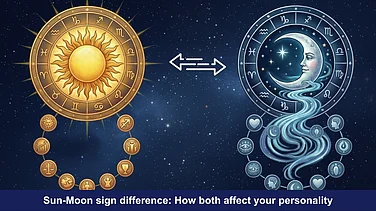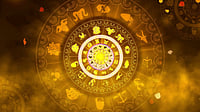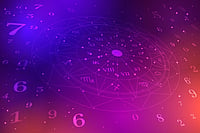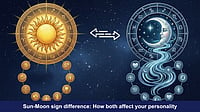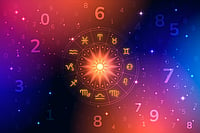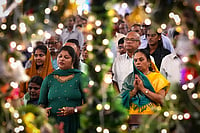One of the most important festivals celebrated by the Hindu population in the nation is Vijayadashami. According to Hindu mythology, the triumph of Lord Rama over Ravana is celebrated during this festival. Usually, Dusshera is celebrated at the end of Navratri and the triumph of Goddess Durga over the demon Mahishasura. It is a celebration of light and a victory of good over evil. It is observed on the tenth day of the Ashwin or Kartik months. This year, Dussehra will be celebrated on October 12. As per the lunar calendar, on the tenth day of the waxing moon, Shukla Paksha, in the month of Ashwin, usually Hindus celebrate Vijaydashami. The day is honoured across the nationwide processions that transport statues of Durga, Saraswati, Ganesha, Lakshmi, and others to nearby rivers or oceans for immersion.
Dussehra 2024: Date and Shubh Muhurat:
In 2024, the festival of Dussehra will be observed on the 12th of October. To ensure that the advantages of the celebration are maximised, it is vital, according to the Hindu tradition, to perform rituals at a time that is considered to be auspicious, also known as Shubh Muhurat. It is thought to be a very powerful moment to invoke the blessings of Lord Rama and Goddess Durga on the day of Vijay Muhurat, which falls on the day of Dussehra.
Significance of Dussehra:
The king of Lanka, Ravana, was an ardent devotee of Shiva. Despite his intelligence, the demon king was actually very much cruel and haughty. With his ten heads and deep understanding of the four Vedas and six Upanishads, Ravana possessed the wisdom of ten scholars. The ten indriyas are made up of five gyan indriyas, which are related to sensory awareness, and five karm indriyas, which are related to physical actions. This gives us a different view of the idea of the ten heads. Ravan experienced a persistent sense of dissatisfaction, regardless of his immense power or the wealth of his kingdom. Egoism, according to Satguru, is when someone puts their own interests and expertise ahead of other people's welfare.
While Ayodhya's king Rama was known as Maryada Purushottam, which translates to "the Perfect Man," "Lord of Self-Control," or "Lord of Virtue," respectively. Even though he had to deal with huge problems all his life, Rama never wavered in his commitment to dharma. Rama gave up his plans to become king and went into exile for fourteen years to keep his father's promise.
Ravana stands for ego, while Rama stands for virtue and the spiritual inner selves, which are made up of love, peace and happiness. When a Divine Soul, or "Satguru," enters our lives, we begin to let go of our egos and negative thoughts.
With this deep thought, every year, the festival of Dussehra is celebrated with great enthusiasm and zeal. People across the country participate in the occasion in their unique style. It is the day when ten-headed Ravana is killed by Lord Rama. Vijayadashami is an auspicious festival in Hinduism and celebrates the triumph of good over evil. Every locality of the country has its uniqueness in the celebrations.
History of Dussehra:
According to Hindu mythology, Ravana, the evil king of Lanka in southern India, wanted Sita. Ravana kidnapped Sita towards Lanka. Lord Rama led an army of monkeys to Lanka and defeated Ravana on the ninth day with the help of Lakshman and Hanuman. Dussehra is celebrated on the very day Ravana is killed, after nine days of Navratri. The Navratri festival is concluded by burning huge and gigantic effigies of the demon Ravana. The killing of Ravana signifies the triumph of good over evil.
Another mythology that is widely practiced in northern and eastern Indian states describes Goddess Durga destroying the demon Mahishasura to establish harmony on Earth. Similarly, in some other places, the story said that the goddess and demon engage in a ten-day war during the Navratri festival. Vijayadashmi, which means "victory that was attained on the tenth day," is celebrated on the day that Goddess Durga defeats Mahishasura.
Vijayadashami Festival Celebration in India:
Dussehra or Vijayadashami is celebrated in several ways across India, demonstrating the wide range of cultural traditions that exist throughout the nation.
1. Ramlila Performances:
One of the noticeable rituals in Northern Indian states, especially in Delhi, Uttar Pradesh, and Madhya Pradesh, is celebrated in Dussehra is Ramlila performances. Ramleela is a programme which is an act performed by the local people about the life of Rama.
2. Effigy Burning:
Another important part of the Dussehra events is setting fire to the effigies of Ravana and his sons Meghnad and Kumbhakarna.
Big, open areas are used for this event, where huge effigies, some of which are fifty feet tall, are set on fire with fireworks and loud cheers. The rituals of burning Ravana's effigy represent the elimination of enmity and the victory of virtue.
3. Worship of weapons:
In certain regions of India, particularly in Karnataka and Maharashtra, Dussehra is linked to Ayudha Puja—a ceremonial veneration of weapons, tools, and vehicles. The tradition arises from the conviction that weapons serve as an extension of a warrior’s dharma and deserve respect. The Kshatriyas are also known as the warrior class. they would honour Dussehra by seeking divine blessings for their weapons before engaging in battle.
4. Processions and Fairs:
On the festival of Dussehra, elephants, horses, and camels that have been decorated are used in a grand procession through towns like Mysore. Idols of gods are carried on. There are also a lot of neighbourhood fairs, food stands, and craft shows, which make the celebrations more fun.
5. Navratri and Durga Puja:
In some states, such as West Bengal, Durga Puja falls on the same day as Dussehra. The Dussehra celebration took place on the last day of Navratri. During this event, the goddess's statue is submerged in water. This actually shows her journey to heaven after defeating Mahishasura.
Burning Effigy - Symbolism and Significance:
Ravana is full of pride, ego, lust, and confidence because he is strong and knows a lot. The act of setting his effigy on fire is a powerful warning to get rid of these bad traits that we all have.
Burning an effigy represents the rebirth of life. Similar to how Lord Rama freed the world from Ravana's oppression, the burning effigies represent the removal of boundaries and negativity, making the way for new beginnings. Often, the figure is made of bamboo, paper, or other materials that can catch fire. Music, fireworks, and happy celebrations are sometimes held at the same time.
Dussehra is more than just a celebration of mythological events. It is just like a strong reminder in human life that good always wins over evil in our daily lives. It makes the basis of truth, justice, and rightness stronger. People all over the country will come together again for the holiday to show their love, celebrate, and fight the never-ending battle between good and evil.
















